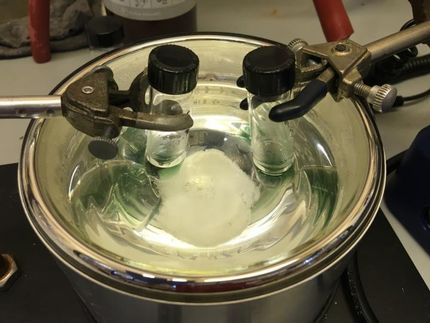Towards the development of super premium gasoline
Advertisement
In contradicting a theory that's been the standard for over eighty years, researchers at the University of Illinois at Urbana-Champaign have made a discovery holding major promise for the petroleum industry. The research has revealed that in the foreseeable future products such as crude oil and gasoline could be transported across country 30 times faster, and the several minutes it takes to fill a tank of gas could be reduced to mere seconds.
Over the past year, using high flux neutron sources at the National Institute of Standards and Technology (NIST) and Oak Ridge National Laboratory (ORNL), an Illinois group led by Yang Zhang, assistant professor of nuclear, plasma, and radiological engineering (NPRE) and Beckman Institute at Illinois, has been able to videotape the molecular movement of alkanes, the major component of petroleum and natural gas. The group has learned that the thickness of liquid alkanes can be significantly reduced, allowing for a marked increase in the substance's rate of flow.
"Alkane is basically a chain of carbon atoms," Zhang said. "By changing one carbon atom in the backbone of an alkane molecule, we can make it flow 30 times faster."
The group's discovery disproves a well-known theory that Princeton University professors Walter Kauzmann and Henry Eyring formed in the late 1940s. They had predicted that all alkanes have a universal viscosity near their melting points. Zhang said the theory had been cited over 3,000 times.
However, a rather distinct odd-even effect of the liquid alkane dynamics was discovered. The odd-even effect in solid alkanes is taught in almost every introductory organic chemistry textbook, i.e., the difference in the periodic packing of odd- and even-numbered alkane solids results in odd-even variation of their densities and melting points. However, the same effect was not expected in liquid alkanes because of the lack of periodic structures in liquids.
"The classical Kauzmann-Eyring theory of molecular viscous flow is over simplified," Zhang said. "It seems some chemistry textbooks may need revisions."
The Illinois scientists had the technological advantage of super high-speed (at the pico-second, 1 trillionth of a second) and super high-resolution (at the nano-meter, 1 billionth of a meter) "video cameras" making use of neutrons to take movies of the molecules. "A neutron 'microscope' is the major breakthrough in materials research and we use it to look at everything. There are things we've never seen before," Zhang said.























































